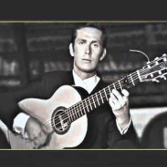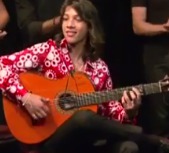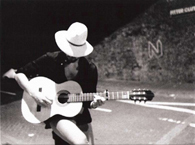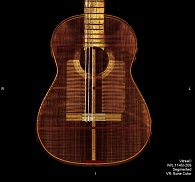Welcome to one of the most active flamenco sites on the Internet. Guests can read most posts but if you want to participate click here to register.
This site is dedicated to the memory of Paco de Lucía, Ron Mitchell, Guy Williams, Linda Elvira, Philip John Lee, Craig Eros, Ben Woods, David Serva and Tom Blackshear who went ahead of us.
We receive 12,200 visitors a month from 200 countries and 1.7 million page impressions a year. To advertise on this site please contact us.
|

|
|
Left Hand
|
You are logged in as Guest
|
|
Users viewing this topic: none
|
|
Login  | |
|

   
Erik van Goch
Posts: 1787
Joined: Jul. 17 2012
From: Netherlands

|
 RE: Left Hand (in reply to Aretium) RE: Left Hand (in reply to Aretium)
|
|
|
quote:
ORIGINAL: Aretium
What did you guys feel helped your left hand strength, dexterity nad precision? Exercises?
Indeed lot's of exercises, focusing on economics of movement/energy exchange, biomechanics, proper relaxation (quite often more can be achieved by proper relaxation then by muscle force) and the correct position/use of thump/fingers/hand/wrist and arm. When studying you have to try to cultivate good habits and to avoid/change bad habits. You can feel/learn the difference by detailed observation of in/output. The base i learned from a first class teacher who showed me the correct use of the hand and gave me simple but very good exercises to develop those skills. My biggest progress i made when i studied the left hand separately from the right hand, giving full attention to every little detail, finger by finger, using a series of self developed pushing/releasing exercises studying individual and combined fingers.
You could start by bringing the string from starting position to the fret... but not in a fluent, split second movement but by traveling that distance as slowly as possible without standing still as well. Once the string has touched the fret go back the same way, again as slowly as possible without standing still. Another excellent exercise is to position the string halfway that distance and to hold it there for a wile.... after a while add a bit of energy, distract a bit of energy etc. while studying/appreciating the biomechanics involved as well as the energy exchange between finger and string.....
you'll be amazed what you can learn from the 1-2 mm that separates the untouched string from the fretboard. I hope to give some detailed studies later.
|
|
|
|
REPORT THIS POST AS INAPPROPRIATE |
Date Dec. 31 2013 14:11:18
 |
|

   
Miguel de Maria
Posts: 3532
Joined: Oct. 20 2003
From: Phoenix, AZ

|
 RE: Left Hand (in reply to Aretium) RE: Left Hand (in reply to Aretium)
|
|
|
My best progress in the lh came from studying the Sor/Segovia etudes. I learned the 1st 19 of the set of 20, taking a year to do so. I got a teacher and he had me go different directions at that point. The Bb barre study #19 is by no means the hardest for the lh or otherwise. to me, that piece is more a test than an endurance feat. if your guitar has a comfortable setup and you have the right tech, it shouldn't be fatiguing. Get David Tannenbaum's notes on the studies. Start with maybe 4, 3, or 2 and circle back to 1. Some of the studies will be some of the most gorgeous and clever music you will ever play. And little in the flamenco lh will bother you after this series.
Right after this, I began carefully studying and learning very easy pieces. I leanrned much of Stanley Yates beginner book. That was also very helpful for both hands tech. The Sor/Segovia etudes, by comparison, are perhaps several years more advanced.
_____________________________
Connect with me on Facebook, all the cool kids are doing it.
https://www.facebook.com/migueldemariaZ
Arizona Wedding Music Guitar
|
|
|
|
REPORT THIS POST AS INAPPROPRIATE |
Date Dec. 31 2013 15:10:47
 |
|

   
mark indigo
Posts: 3625
Joined: Dec. 5 2007

|
 RE: Left Hand (in reply to Aretium) RE: Left Hand (in reply to Aretium)
|
|
|
quote:
I feel like my right hand is much more advanced then my left.
I struggle playing intermediate classical pieces and falsetas that require stretches and quick finger changes.
I've beenm playing things slowly and then upping the bpm however this is not helping me.
What did you guys feel helped your left hand strength, dexterity nad precision?
Exercises?
You need to tailor whatever you study to solving the actual problems you are having with the music you want play.
I have often found random prescriptions of "studies" that have little or nothing to do with the problems or goals completely irrelevant.
If you want to play flamenco then study flamenco, classical studies are a red herring.
However, you have indicated that you are playing classical pieces as well....
Regardless of the style you have said the problems are stretches and quick finger changes.
To this end you can forget all the studies which focus on barres and "strength" already.
Do you mean stretching 5 frets or more along a string?
I have found practising 3 note per string scales really, really useful for developing stretches.
I have been using them for warming up and for practising various techniques for years and I have pretty good stretch-ability.
Another thing that is good for stretches is arpegios, not the sort of right hand pima type arpegios,
but 1, 3, 5, 1, 3, 5, 1 arpegios across the strings.
What do you mean by "quick finger changes"?
Do you mean changing position on the fretboard?
Scales which change position a lot such as the classical "Segovia" type scales can be really good for practising changing positions, also the versions of the arpegios mentioned above that change positions.
Also scales in 3rds and 6ths will have you changing fingers a lot.
Also in all of these you can also be practising picado, pulgar etc. with the right hand.
also you can use pi or tremelo with scales in 6ths.
_____________________________
|
|
|
|
REPORT THIS POST AS INAPPROPRIATE |
Date Jan. 1 2014 22:01:29
 |
|

   
Erik van Goch
Posts: 1787
Joined: Jul. 17 2012
From: Netherlands

|
 RE: Left Hand (in reply to Aretium) RE: Left Hand (in reply to Aretium)
|
|
|
quote:
ORIGINAL: Aretium
I struggle playing intermediate classical pieces and falsetas that require stretches and quick finger changes. .......What did you guys feel helped your left hand strength, dexterity nad precision? Exercises?
My main focus when studying the left hand (exercises or actual music) is becoming aware (and in control) of optimal positioning/use of thump/hand/arm/fingers while applying optimal (minimal) pressure and optimal (maximal) relaxation. Economical use of movements and energy can mean a world of difference.
When possible i try to place my hand in such a way the hand/finger unit remains as natural/relaxed as possible (basically the way they are when you walk with a totally relaxed hand).... the more ground you cover with your hand the more natural your fingers can behave and the more flexible they are when they have to be replaced/stretched.
It might be hard to reach a certain note when the intended finger is fixed/stretched to much to begin with....... often a better hand position might give a better starting position with a lesser fixed/stretched finger, saving the full stretching potential to reach that far away note. Also the hand and other fingers can help you to cover long distances For maximum stretching put your index tip on a fret and move your hand to the right...if you stretch your pinky as well you'll have a huge area you can cover. It more or less works the same when using the index to cover half barre...does it really have to cover all it's intended strings "all the time" or can it be partly freed for a moment, supporting that other finger to cover that hard to reach melody note wile still giving support to that 1 base note that was actually sounding so far (before falling back in position again to fret the next notes in line) ... Quite often fingers can move more easily when other fingers remained fixed on their frets. Sometimes less experienced players (and even experienced players) treat a set of notes as individual notes played with individual fingers (lifting and re-fretting them all the time) were i simply grab (and hold) the matching chord, keeping every finger fretted for more sound and in case they are needed again...on top they are a great reference/counter balance for the fingers that are lifted/added/replaced.
Often really difficult parts can only be played when every trick of the book is used and there is also a limit to what one can do. Accepting/challenging ones limitations is all part of the deal. Some improvements are just a matter of knowing the trick, other skills just need time to develop like good wine. It all begins with awareness of your flaws, tackling 1 thing at the time until it is completely to your liking.... or abandoned for being (still) out of reach.
A very important part of the ability to play fluently is to have a good communication between your brain and your fingers. Studying isn't really about training your muscles, it's about biomechanics and training/refining your brain and nerve system. You have to make sure you understand your body and install the right wiring so that your hands do exactly what you tell them to do. Thats why i always favor to study every aspect involved separately and with complete focus.
Numerous times i witnessed experienced players repeating a phrase over and over again while making the same mistake over and over again... quite often playing totally wrong flows/accents and not making distinction between melody notes and supportive notes. Seeing their struggle i would ask them "please can you sing that phrase to me... not every single note you play (many notes are supportive and intended to stay on the background) but just the main melody with it's intended flow and accents. Released from their "unwilling" hands they generally were able to produce a pretty fluent line with way better flow and way better accents then produced by their hands. Next i would ask them to sing it again a couple of times and they generally did so with a combination of "yeah ok" and "what's the point of doing this". Still, when after a couple of rounds of singing i tell them "now, play it exactly like that" to their own surprise they generally have no problem playing it correctly in one take.... with a natural flow of the intended music, correct accents and correct balance between melody and added notes.
You might be amazed how much difference there can be between what you think you play and what you are actually playing. Only a handful of people have the natural ability to project their emotions into the guitar without the need to translate them to their hands first. But like demonstrated above one can copy it to a certain extent. All you have to do is pick up a piece and compare what comes out of your guitar with your INNER VOICE, phrase by phrase, note by note. Only when your hands tell the same story as you feel inside you can play fluently and with incredible ease, so every time you notice a difference in expression between your inner voice (sing sing sing) and the translation your hands produce alter the last until it is an exact match... phrase by phrase, noter by note. Not only will it raise your level of awareness but on the long term it will totally change the communication between your inner voice and your hands, up to a point were your hands no longer seem to exist.
I'm convinced that somewhere in your body there is a blueprint for perfect playing that covers/dictates both interpretation, biomechanics and even choice/use of finger for every possible situation. If you match that blueprint you can perform magic, if you don't you loose flow, power and sound. Every single time i matched my playing to my inner voice (by comparing them phrase by phrase) my flow increased dramatically. In the late 80ties/early 90ties i was able to "play" complete pieces in my head as real as real can be. Every now and then i noticed i favored a different finger in my head then in real life and every time i changed my playing finger for the one suggested by my brain it highly improved my flow and control. Once the finger suggested by my blue print could not be used in real life and that spot remained the only weakness of that piece. In a way studying is like hacking...... you try all plausible and even un-plausible options until you feel "this is it". Obviously this still leaves years of hard work en concentrated studying. Playing fluently means making optimal use of biomechanics and pairing the right thought to the right action.... if you don't like an outcome you have to alter one of those parameters.
As far as that inner blueprint for perfect playing is concerned, it might sound idiotic but that does not mean it's not true. Quite recently (25 years after i deducted there is some kind of blue print) i became aware of the existence of focal dystonia and found an expert explaining that in your brain there is a map showing the wiring of your hand and fingers. When you decide to move a finger, your brain performs that operation in it's virtual copy rather as in the finger itself. In case of focal dystonia some parts of this virtual copy somehow are dislocated....obviously when a body part and it's virtual copy don't mach nerve pulses can end up all over the place. I believe there is a similar virtual map/manual showing in detail how you are supposed to play the guitar, according to your brain. I reached my highest levels of playing in periods i intensely connected with my virtual blueprint/manual, copying it in every little detail. Creating/restoring the communication between inner voice and acting hand can mean a world of difference and a couple of minutes of mental visualization (of interpretation and/or technique) can beat hours of actual playing.... obviously this does not replace severe study of how to operate your hands the best possible way and lots of full focused observation/correcting.
|
|
|
|
REPORT THIS POST AS INAPPROPRIATE |
Date Jan. 2 2014 18:42:39
 |
|

   
mark indigo
Posts: 3625
Joined: Dec. 5 2007

|
 RE: Left Hand (in reply to guitarbuddha) RE: Left Hand (in reply to guitarbuddha)
|
|
|
quote:
Do you for example really regret your exstensive study of 'la Pompe' or the Sor Bflat ? Perhaps becuase you find Aguado's studies and lessons more appropriate to flamenco textures ?
I didn't have classical guitar lessons as a kid or before learning flamenco guitar, and I have never played the studies you mention.
I did have classical guitar lessons for a little while after about 5 years of flamenco playing.
It was ok, but I got bored and quit, and just concentrated on flamenco only again.
I can't say it really helped my flamenco playing that much, but I don't think it did me any harm.
I have never found classical studies particularly helpful for playing flamenco or working on flamenco technique, but some of the scales and arpegios favoured by classical guitarists have been helpful at times.
One of my early flamenco teachers taught me the CAGED system of chords and arpegios, and the 3 note per string scales.
He really encouraged me to play around with them and use them to make my own exercises and falsetas.
I took one of Gerardo Nuñez's courses some years ago, and liked his approach of making up exercises and studies to help with whatever you want to work on.
There are lot of good examples of his approach on his Encuentro vid.
Between taking the course with Gerardo and the release of his Encuentro vid I also worked through the Oscar Herrero vids on technique.
Another resource is the Pedro Sierra technique disc.
On there he has an exercise for picado string crossing which is a scale of C major in 3rds on the top two strings.
I found it helpful for my left hand, and continued the scale down an octave to the 5th string.
I then started really addressing various limitations in my left hand technique and working on these using scales in 3rds transposed round the cycle of 5ths, and also scales in 6ths, octaves, and 10ths.
Which is why I recommended these for "quick finger changes".
[I use these with flamenco right hand technique. Picado string crossing, pulgar, tremelo etc.]
_____________________________
|
|
|
|
REPORT THIS POST AS INAPPROPRIATE |
Date Jan. 4 2014 19:02:59
 |
|
 New Messages New Messages |
 No New Messages No New Messages |
 Hot Topic w/ New Messages Hot Topic w/ New Messages |
 Hot Topic w/o New Messages Hot Topic w/o New Messages |
 Locked w/ New Messages Locked w/ New Messages |
 Locked w/o New Messages Locked w/o New Messages |
|
 Post New Thread
Post New Thread
 Reply to Message
Reply to Message
 Post New Poll
Post New Poll
 Submit Vote
Submit Vote
 Delete My Own Post
Delete My Own Post
 Delete My Own Thread
Delete My Own Thread
 Rate Posts
Rate Posts
|
|
|
Forum Software powered by ASP Playground Advanced Edition 2.0.5
Copyright © 2000 - 2003 ASPPlayground.NET |
0.09375 secs.
|


 Printable Version
Printable Version










 New Messages
New Messages No New Messages
No New Messages Hot Topic w/ New Messages
Hot Topic w/ New Messages Hot Topic w/o New Messages
Hot Topic w/o New Messages Locked w/ New Messages
Locked w/ New Messages Locked w/o New Messages
Locked w/o New Messages Post New Thread
Post New Thread